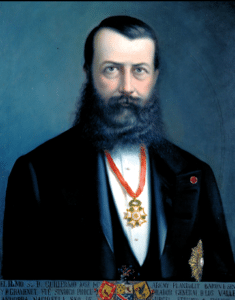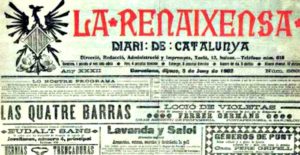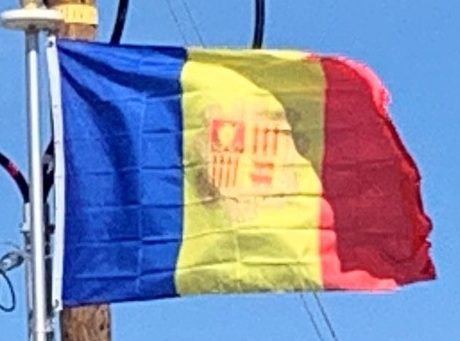During this period, Andorra’s late medieval institutions and rural culture remained largely unchanged. In 1866 the syndic Guillem d’Areny-Plandolit led the reformist group in a Council General of 24 members, elected by suffrage limited to heads of families, replaced the aristocratic oligarchy that previously ruled the state. The New Reform (Nova Reforma or Pla de Reforma) began after being ratified by both Co-Princes and established the basis of the constitution and symbols (such as the tricolor flag) of Andorra. A new service economy arose as a demand of the inhabitants of the valleys and began to build infrastructure such as hotels, spa resorts, roads and telegraph lines.

The authorities of the Co-Princes (veguer) banned casinos and betting houses throughout the country, establishing an economic conflict with the demand of the Andorran people. The conflict led to the so-called Revolution of 1881 or Troubles of Andorra, when revolutionaries assaulted the house of the syndic during 8 December 1880 and established the Provisional Revolutionary Council led by Joan Pla i Calvo and Pere Baró i Mas, who granted the construction of casinos and spas to foreign companies. During 7 and 9 June 1881, the loyalists of Canillo and Encamp reconquered the parishes of Ordino and Massana by establishing contact with the revolutionary forces in Escaldes-Engordany. After a day of combat finally the Treaty of the Bridge of Escalls was signed on 10 June. The Council was replaced and new elections were held. But the economic situation worsened, as society was divided over the Qüestió d’Andorra (the Andorran Question in relation to the Eastern Question). The struggles continued between pro-bishops, pro-French and nationalists who derived the troubles of Canillo in 1882 and 1885.
Andorra participated in the cultural movement of the Catalan Renaixença. Between 1882 and 1887 the first academic schools were formed where trilingualism coexists with the knowledge of the official language, Catalan. Some romantic authors from both France and Spain reported the awakening of the national consciousness of the country. Jacint Verdaguer lived in Ordino during the 1880s where he wrote and share works related to the Renaixença with Joaquim de Riba, writer and photographer. Fromental Halévy, for his part, had already premiered in 1848 the opera Le Val d’Andorre of great success in Europe, where the national consciousness of the valleys during the Peninsular War was exposed in the romantic work.

20th and 21th Century: Modernization of the Country and the Constitutional Andorra:
Andorra declared war on Imperial Germany during World War I, but did not take part directly in the fighting. Some Andorrans volunteered to take part in the conflict as part of the French Legions. It remained in an official state of belligerency until 1958 as it was not included in the Treaty of Versailles.
In 1933, France occupied Andorra following social unrest which occurred before elections due to the Revolution of 1933 and the FHASA strikes (Vagues de FHASA); the revolt led by Joves Andorrans (a labour union group related to the Spanish CNT and FAI) called for political reforms, the universal suffrage vote of all Andorrans and acted in defense of the rights of local and foreign workers during the construction of FHASA’s hydroelectric power station in Encamp. The 5th April 1933 Joves Andorrans seized the Andorran Parliament. These actions were preceded by the arrival of Colonel René-Jules Baulard with 50 gendarmes and the mobilization of 200 local militias or sometent led by the Síndic Francesc Cairat.
